Business Economics Assignment: Nestle Case Analysis - Understanding the Law of Demand & Supply
Question
Task:
Business Economics Assignment Task:
TASK 1 –
Demand and Supply analysis are fundamental to any business thus every business must understand its impact and dynamics. Demand and Supply analysis therefore underlines to some extent the growth and success of most businesses in our society today.
Critically analysed the following micro economics concepts with reference to any business of your choice.
1.1 Explain the law of Demand, movement along the same demand curve (with the aid of diagram) and changes in demand curve (with the aid of diagram).
1.2 Explain the law of Supply, movement along the same supply curve (with the aid of diagram) and changes in supply curve (with the aid of diagram).
TASK 2 –
1.1 Compare and contrast emerging theories and models in 21st century contemporary economics with those of the 20th century, and relate both of these to modern business practices.
Answer
Introduction
Introduction to the notion
As opined by Kanev and Terziev, (2017) with regards to the business economics assignment, business economics is a widely known concept in the arena of Economics that covers the areas of business methodologies including organization, infrastructure, finance, marketing, and other environmental influences and issues. It can be considered that business economics and its application encompass all the subjective areas of concrete experience like manufacturing, production, sale, demand, and supply mechanisms.
Aim of the report
The aim of this report is to ascertain the demand and supply instrument and also identify the distinction between the traditional and modern theories of business economics.
Background of the chosen company and industry
In this report for understanding the considerable mechanism of demand and supply in the market revolution, Nestle has been chosen for more in-depth appreciative analysis. Nestle is considered as one of the most known brands that provide their products and services approximately to all developed and developing countries. Nescafe is one of the most illustrious merchandise propelled by Nestle. Where individuals get more numerous kinds of coffee mixtures and have them in their daily life. As per the current year data As per the company report, the brand ranked 29th in the world’s most appreciated and acknowledged brand and the firm also made nearly
10.5 million sales in international nations (The Economic Times. 2021).
Task 1
1.1 The law of Demand
What is the meaning of demand in business economics
As per the analysis made by Yang et al., (2018), Demand is the concept that can be measured as the financial belief that denotes the wish of the customers to and meet the desire by purchasing the concerned product or services.
What is the concept of the law of demand
Conferring to the standpoint made by Mazurek et al., (2019), The law of demand is measured as an essential conception of finances that helps to make the identification of the considering association between the price of a product and the quantity which is demanded by the customers. It can also be stated that the business economic concept, the law of demand shows the inverse relationship exists between the price and the quantity demanded, the concept can be clearer with the help of the following attached graphical representation.
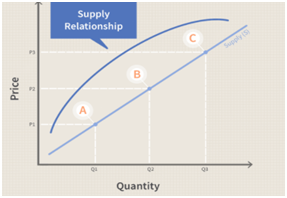
Figure 1: Law of demand
Source: (Franks and Bryant, 2017)
In the above-attached graph, it has been observed that there is an inverse relationship exists in between the price of the product and the quantity demanded by the consumer at the time of purchasing and fulfilling their willingness to purchase as per their purchasing power parity. It has been shown that when the price is measured in the vertical axes and quantity is measured in the horizontal axis then the demand curve is downward sloping straight lines show the negative or inverse relationship.
Show the movement of the demand curve as per the organization
The demand curve moves from one position to another for a particular commodity with its changing price or quantity demanded. The movement takes place along a similar demand curve where the ideal point shifts to one position to another. This movement can take place when Nestle decided to change their price whether to increase or decrease as per the market requirements. This movement can be shown in the following diagram to make clear the analysis.
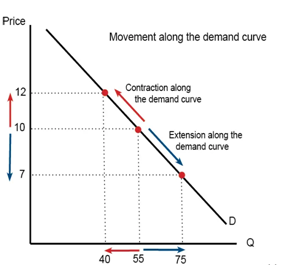
Figure 2: Movement along the demand curve
Source: (Guan, 2017)
In the above diagram, the movement along the demand curve in both expansion and contraction position has been indicated where linking with the organization it has been obtained that when nestle sells their coffee sachet at price 10 then a consumer makes the purchase of almost 55 packets and extension along the demand curve takes place when the sachet price reduce to 7 and the demand increases and the consumer induced to make the purchase of 75 packets of the same and contraction movement taken place when the company increases the price to 12 and the consumer willing to purchase less amount up to 40 packets.
How the demand curve shifts
More often it could be considered that when the demand for any products is reduced then the demand curve shifts downward or leftward position and the demand curve shifts upwards or rightward when the demand for any products or services increased. This shift of upward and downward of a demand curve is considered to happen due to the influence of some factors which play a crucial role in every business and economic activity. The first factor which causes the shaft of the demand curve either to upward or downward is the change in the number of consumers. This has been found when the in a targeted market region of tourism business there is the low peak of tourists and due to the low demand for the tourist spot considering offseason scenario, the demand curve would shift leftward.
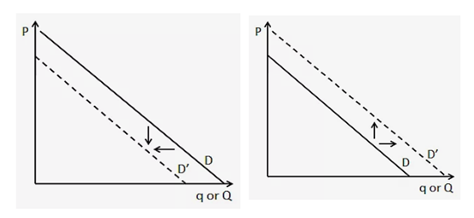
Figure 3: Shift of demand curve
Source: (Becker et al., 2017)
In the above diagram, it has been observed when the demand for the concerned products is reduced then the demand curve shifts to the leftward or more to the downward position.
Show the shift of the demand curve as per the organization
Considering the major business framework of Nestle and their products, it has been perceived that the demand curve determined by the demand for the company products would shift both in an upward or downward direction with the shift of price and demand for the products like coffee, beverages, chocolates or other snacks items made by nestle. There are various competitors of nestle that exist in the market like Hershey, Kraft Heinz, Unilever, and others who made substitute products like Nestle used to make.
1.2 Explain the law of Supply
What is the concept of supply in business economics
According to the viewpoint of Buechner, (2018) supply is one of the most considerable economic tools which state the concept of business and its mechanism in a clearer way. In the concept of supply, it has been considered that consumers are willing to purchase some amount of products or some qualitative services in exchange for money and the seller is going to make the sale as per the supply of the products and services in relevant to the market.
What do you mean by the law of supply
The Law of supply is one of the most used and known concepts under macroeconomics which established the positive relationship between the price and the quantity that is going to supply in exchange for price or another monetary mechanism. The law of supply concept stated that when the concerned organization Nestle going to increase the price of one product then it tends to increase the supply of the same product in the targeted market region. The Law of supply can be even clearer with the help of the following graphical representation which is upward rising and shows when price rises supply also rises and when the price falls supply also tends to reduce.
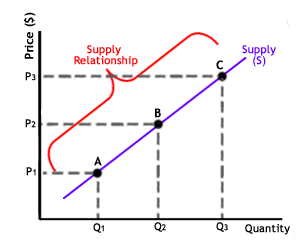
Figure 4: Law of supply and supply relationship
Source: (Yoshii, 2017)
In the above diagram, it has been observed that the quantity supplied increases from Q1 to Q2 and then Q3 with the increasing price from P2, to P2 and the P3, and the upward rising straight-line supply curve shows this relationship between the price and quantity supplied under the law of supply. Explain the fact of supply curve movement as per the organizational context According to Maharjan, (2021), the supply curve tends to move from one particular point to an alternative point along a similar supply curve at the time when the organization tends to change the price and so the quantity supply is also being changed to some extent. Here the movement of the supply curve is obtained as per the changing market scenario when the other factors remain at the same position. This movement of the supply curve takes place when the price of the Nestle products changes or the supply or availability of some products is also being changed as per the market conditions. Nestle has one of the largest play backgrounds of manufacturing Maggie, coffee mixtures, milk products, and chocolates and in the current times due to inflation the company increased their price of the products marginally and this increase in price pushes up the supply more than the market demand.
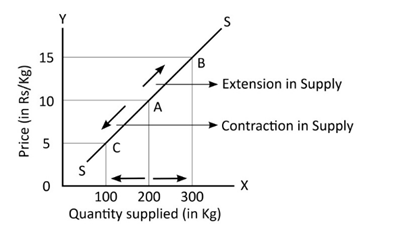
Figure 5: Movement along the supply curve
Source :(Maharjan, 2021)
In the above diagram, the movement of the idea supply position has been shown along a similar supply curve. Considering Nestle and the products made by the company exists in the stable position when the price of the Maggie is fixed at 10 and the supply is made up to 200 kg and when the price increase to 15 then the supply increased up to 300 kg and that shows the extension in supply and opposite happens when the price reduced to 5 and the contraction in supply has been observed at 100 kg.
Factors that cause shifts in the Supply curve
The shift of the supply curve in the market takes place due to various factors and their corresponding influences. It has been observed that when the price of input with which the actual product is made up with changes the supply curve shifts to a new position due to the change in the supply of the product.
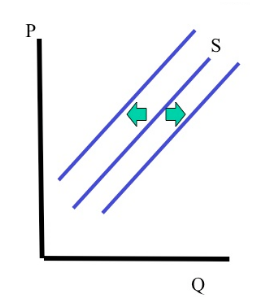
Figure 6: Shift of supply curve
Source: (BBC Bitesize. 2021)
Natural conditions also caused the shift of the supply curve. When the technology improved specifically the process of manufacturing improved a company started making more of the particular products and that also increased the availability or supply of the product in the market. Explain in a chosen business context- shifts in the Supply curve The shift of supply curve as per the increasing supply or sales made by the company Nestle can be understood with the following Diagram.
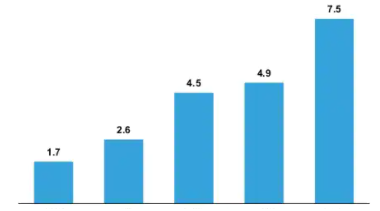
Figure 7: Increasing supply and sales of Nestle
Source: (Statista.2021)
TASK 2
Comparison and Contrast of Traditional and Contemporary Economics Theories
Economic theories have been developed in different time by various economists according to the requirements of the consumer behaviour analysis. Consumer demand is always changing in the modern world and this is why the theories of 20th century have been updated in 21st century. Classical and neoclassical theories are most important in the 220th century and on the other hand, nudge theory based on consumer behaviour is important to analyze the overall customer performance.
20th-century contemporary theories: contrast and the divergence amongst the customary and modern theories in the business economics framework can be understood with the measurement f each time theories and models. As per the consideration made by Vlados, (2019), Classical and neoclassical theories have made the purpose of specifying and facilitating the business. Classical theory has been originated in the early 20th century which shows the large-scale industrial mechanisms that considered upsurging manufacturing and competency at a similar timeframe. Relevance with the classical theory, neoclassical theory is the supplementary form of the classical theory that is based on business, production, and various areas of economics and finance. The aim of the industries at that time is to accomplish the Market proportion of gross domestic product and the revenue which is corresponding to the ultimate revolution and success. According to the viewpoint of Swianiewicz, (2021), the Laissez-faire rule is another contrivance that impacts the business trade with the valuation of the free entry and exit without any unnecessary government interventions. Considering the products of nestle the company tends to progress in their industrial procedure with the implementation of innovation and new forms of products to capture more market regions and increase their number of potential customers.
Keynesian theory is another theory introduced in the 20th century. This theory was propounded by Keynes at the time of economic depression and as per the theory, the government expense can be advantageous to revamp the economic conditions with the creation of more employment scopes and also reduce the cope of inflation into the overall business market. The details of the economic depression has been considered in the theory of Keynes’s and this is why the unemployment and inflation concepts have been mentioned in the study of Keynes.
21st-century theories: For considering the comparison and contrast with the traditional Economics theories and approaches with the modern theories 21st-century theories including behavioural economic theory and Nudge theory need to be taken into consideration. In the behavioural economic theory both the idea of economics and psychology have been merged well together which influences the market framework and pushes the mechanism into a new position. As per the behavioural economic theory, the movement takes place due to the change in people's decision-making and other preferences. This change in consumer Behaviour and their changing taste and preferences towards the particular products or services corresponds to make an impact on the overall business market which also impact in economy and financial structure of the global countries.
Nudge theories also show another side changing the Behaviour of individuals where it shows the effective and positive reinforcement made by the people towards the change in market conditions. This theory helps to understand the current financial situation of the country and make improvised decisions over this. This psychological state makes an analysis of the economic and financial structure of the country and more of the world. The psychology of customers have been considered in the nudge theory which reveals that analysis of customer preferences is essential in order to identify the actual requirements of consumers.
Comparison of these theories with modern theories
The comparison and Contrast among the traditional theories and models in business economics can be made with the modern economic approach. It has been observed that both the classical and neoclassical theories are based on a single market scenario where the free entry and free exit into the market is the one and best option to reverse the market state into a facilitative position. Keynesian theory was intrigued at the time of depression which is suitable to that timeframe and become less suitable to the current time frame when the government expense over the country's industrialization is not only the option to pushes the market into the upper state. In the modern time, scale nudge theory or behavioural economic theories help to understand consumer psychology and their decisions over making the choice of purchasing any products or services and it can be stated that unlike the traditional theories these modern theories help the companies and the industry to understand the current trend and consumer preferences and made the analysis as per their choice and demand. Based on the comparison, it can also be stated that the nudge theory is important in order to identify the changing behaviour of customers in the modern world. The modern theories of 21st century can be applied easily based on the current requirements. The laisseze fair leadership style is important at the present age for ensuring the quality decisions with the help of subordinates. The theory of Keynes’s is the total spending theory in the economics and the effect of inflation has been considered in the study. In this context, it can be stated that the Keynes’s theory has the similarity with the theory of 21st century’s nudge theory. This is because, the nudge theory has focused on the financial structure and Keynes’s theory has also focused on the financial structure.
Conclusion
At the end of the report, it can be concluded that demand and supply are the two fundamental concepts of business economics and are considered to be changed as per the change in market conditions or other factors. People get to know more about the quality of their extraordinary products of foods, beverages, and other kitchen products in the 21st century. It has also been evaluated that though all the theories of 20th, 21st or others made depending upon the economic positions there are distinctions depending on their idealization or other concepts of mechanism as per the analyzed timeframe.
References
BBC Bitesize. 2021. Supply and demand - Economy - GCSE Business Revision - Other - BBC Bitesize. [online] Available at:
Becker, G.S., Michael, G. and Michael, R.T., 2017. Economic theory. Routledge.
Buechner, M.N., 2018. A comment on the law of supply and demand. Journal of Philosophical Economics, 11(2), pp.67-80.
Franks, E., and Bryant, W. D. 2017. The Uncompensated Law of Demand: A ‘Revealed Preference’approach. Economics Letters, 152, pp.105-111.
Guan, D.X., 2017. Transaction Cost and the Law of Demand.
Kanev, D., and Terziev, V. 2017. Behavioural economics: development, condition and perspectives. Business Economics, 4(52), pp.387-410.
Maharjan, P., 2021. Movement along a Supply Curve and Shifts in Supply Curve - Businesstopia. [online] Businesstopia. Available at:
The Economic Times. 2021. Consumer Products News: Today's Consumer Products Industry News, Consumer Products latest Updates | The Economic Times. [online] Available at:
Vlados, C., 2019. The Classical and Neoclassical theoretical traditions and the evolutionary study of the dynamics of globalization.. Yang, X., Zhang, Y., He, H., Ren, S. and Weng, G., 2018. Real-time demand side management for a microgrid considering uncertainties. IEEE Transactions on Smart Grid, 10(3), pp.3401-3414.
Yoshii, S. 2017. An Extinction of Adjustment Time and an Introduction of Stability Condition in Economics through Misunderstandings to JS Mill’s Law of Supply and Demand and International Value Theory. In A new construction of Ricardian theory of international values (pp. 245-263). Springer, Singapore.












